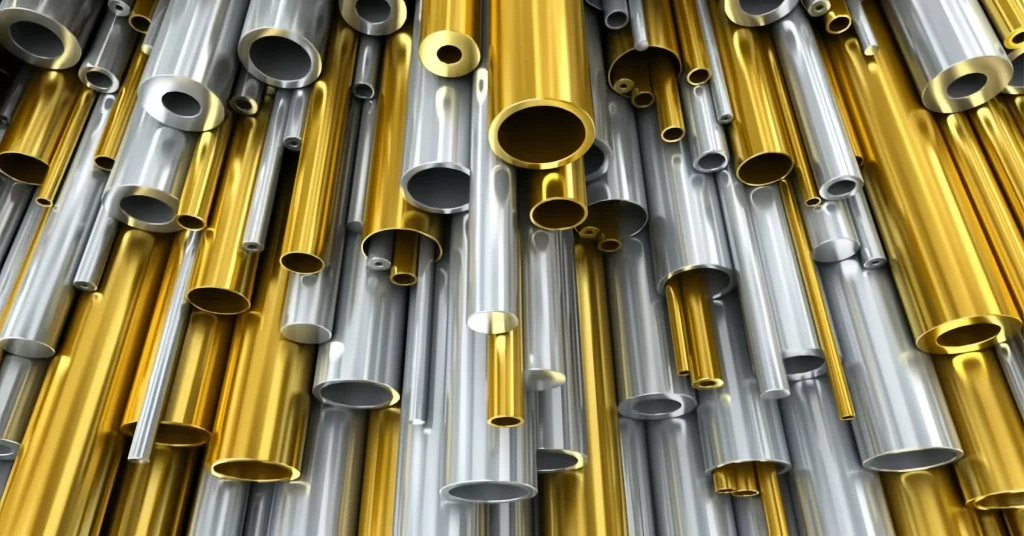Introduction
Choosing the right metal alloy for casting is essential to achieving strength, durability, and precision in finished components. Aluminum, brass, and bronze are among the most commonly used casting alloys across industries, each offering unique mechanical properties and advantages. This guide explores their characteristics, benefits, and ideal applications to help you make informed design and manufacturing decisions.
Aluminum Casting Alloys
Aluminum alloys, an essential part of the aluminum, brass, and bronze casting group, are widely used in the industry due to their lightweight nature, high thermal conductivity, and excellent corrosion resistance.
Key Features:
Ideal for parts requiring low weight and high strength.
Excellent machinability and finish.
Resistant to oxidation and corrosion.
Recyclable and cost-effective for large-scale production.
Applications:
Automotive engine components, transmission housings, aerospace parts, and consumer electronics.
Design Tip:
For thin-wall or complex castings, control the fluidity and cooling rate carefully to minimize porosity and shrinkage defects.
Brass Casting Alloys
Brass, a key material among aluminum, brass, and bronze casting alloys, is a copper-zinc alloy known for its bright appearance, good corrosion resistance, and easy machinability. It’s particularly valued in decorative and functional components that require both beauty and strength.
Key Features:
Excellent castability and machinability.
Resistant to tarnish and corrosion.
Offers superior acoustic and decorative properties.
Applications:
Plumbing fittings, door handles, valves, marine hardware, and musical instruments.
Production Tips:
Avoid overheating brass to reduce zinc evaporation and gas porosity.
Add small amounts of lead or tin to improve machinability.
Ensure proper venting in molds to prevent gas pockets.
Bronze and Aluminum Bronze Alloys
Bronze alloys, especially aluminum bronze, are part of the family of aluminum, brass, and bronze casting materials, recognized for their exceptional strength and outstanding resistance to corrosion, particularly in marine and industrial environments.
Key Features:
High strength and toughness under heavy loads.
Excellent resistance to seawater, chemicals, and wear.
Forms a protective oxide layer that prevents corrosion.
Applications:
Marine propellers, ship valves, pumps, heavy-duty bearings, and oil & gas components.
Manufacturing Considerations:
Maintain precise melting and pouring temperatures to prevent oxide inclusion.
Use proper heat treatment to optimize microstructure and avoid brittle phases.
In marine environments, aluminum, brass, and bronze alloys with slightly higher nickel than iron content should be selected for improved corrosion resistance.

How to Choose the Right Alloy
| Requirement | Best Alloy Choice | Reason |
|---|---|---|
| Lightweight parts | Aluminum alloy | Low density and high strength-to-weight ratio |
| Decorative finish | Brass | Attractive appearance and easy machining |
| Marine or harsh environments | Aluminum bronze | Exceptional corrosion and wear resistance |
| Cost-effective production | Brass or Aluminum | Economical and widely available |
| High load & durability | Bronze alloys | Superior strength and fatigue resistance |
Best Practices for Quality Casting
Design molds with proper venting to reduce gas porosity.
Control melting and pouring temperatures to prevent oxide formation.
Use controlled cooling rates to avoid cracks or shrinkage.
Perform heat treatment or annealing when necessary.
Conduct quality tests (mechanical, chemical, and corrosion resistance) before mass production.
Each alloy, aluminum, brass, and bronze, brings unique strengths to the casting process. Aluminum offers lightweight efficiency, brass adds visual appeal and machinability, while bronze provides unmatched durability and corrosion resistance. Understanding these differences helps manufacturers choose the perfect material for reliable, long-lasting, and cost-effective products.